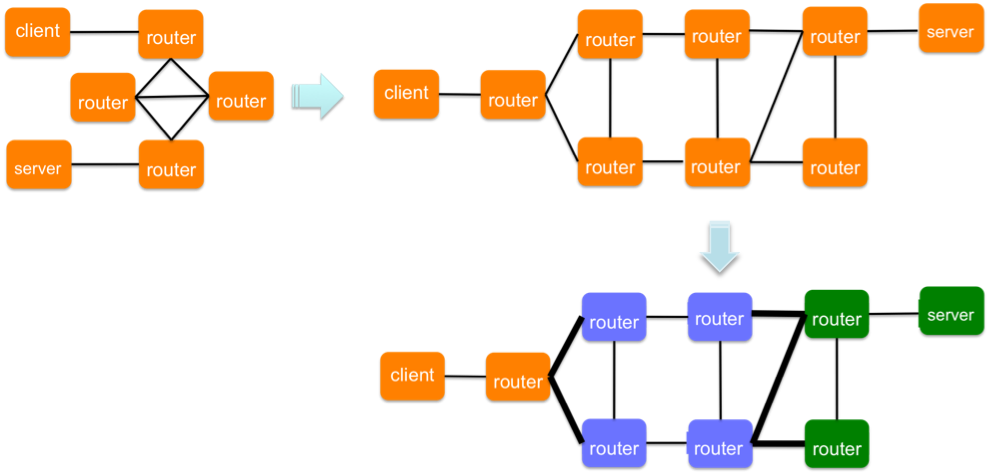| Version 5 (modified by , 10 years ago) (diff) |
|---|
A Tutorial on Systematic Experimental Design

Scaling Up
So far we have run the experiments in a relative small topology in Step II, and we have verified all the install scripts and measurement automation. Thus, we can scale up the experiments to larger topology. There are two dimensions of scaling up. First, keep the same type of topology used in Step II, and select VMs from two or three different InstaGENI aggregates; Second, increase the number of virtual routers in the topology, where these virtual routers are selected from the same aggregate used in Step II.
Part A. Increase the number of aggregates
This type of scaling up requires a different kind of link to connect VMs belonging to different aggregates, we can select EGRE tunnel or Stitching links. As the figure showing below, we do not change the topology as we used in Step II, but we will select VMs from three different InstaGENI aggregates.
In this tutorial, we will show how to create stitching links between multiple aggregates. You can also check the stitching tutorial for detailed instructions.

|
|

|
|

|
|
Part B. Increase the number of nodes in one aggregates
For this type of scaling up, the setup is similar to what we have done in Step II, so we will not go into details.
- Create a slice
- Create the topology in Flack, including end hosts.
- Select disk image for routers and end hosts, and add install services and execute services
- Submit VM reservation requests
- Login to the nodes and run experiments.
- Release the resources and cleanup the slice
Part C. Increase both the number of nodes and aggregates
By combining Part A. and Part B. we can create large size of geographically distributed network. There are two ways:
- Part A. --> Part B
- Create a small topology with nodes from multiple aggregates
- Increase the number of nodes within each aggregates, so that the whole topology size is increased.
- Part B. --> Part A
Attachments (4)
- ScaleUp.png (49.2 KB) - added by 10 years ago.
- scaling-aggregate-nodes.png (97.8 KB) - added by 10 years ago.
- scaling-node-aggregates.png (100.5 KB) - added by 10 years ago.
- 7router-1am-xorp-labwiki-2.rspec (70.1 KB) - added by 10 years ago.
Download all attachments as: .zip




